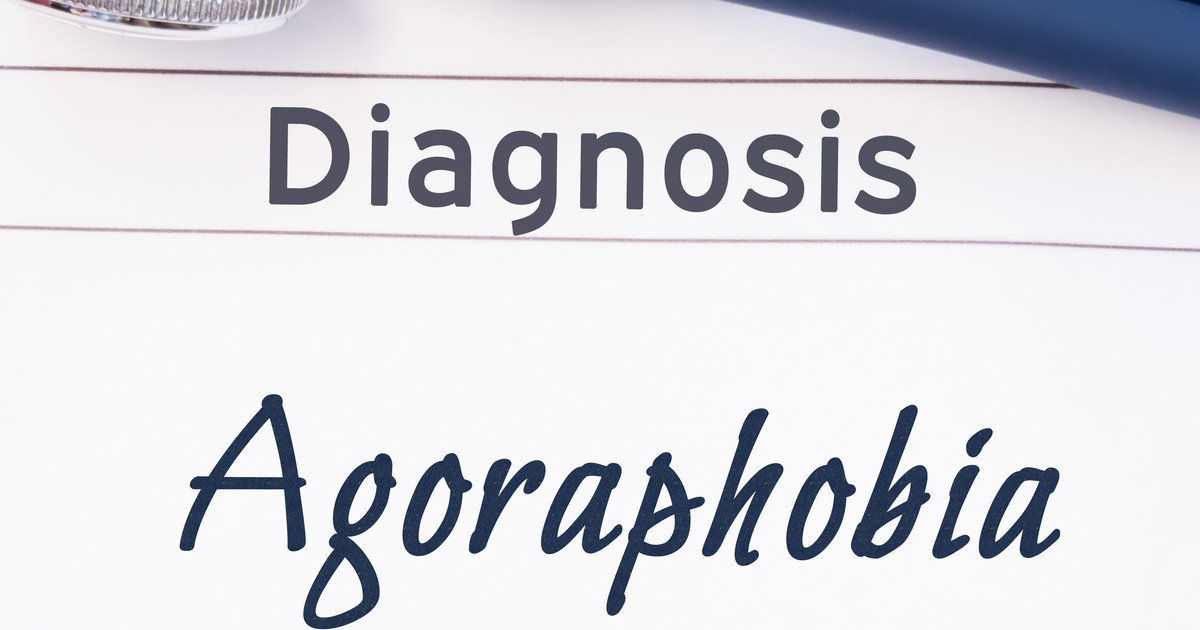Guide To Diagnosing And Treating Agoraphobia
Agoraphobia is a serious anxiety disorder that causes affected individuals to experience extreme fear of any situation in which they might feel embarrassed, helpless, or trapped. Some individuals develop agoraphobia after experiencing a traumatic situation they're afraid will recur, and some develop agoraphobia in addition to an already-existing anxiety disorder like generalized anxiety disorder or panic disorder. The exact situation a patient fears varies widely depending on the individual. Some of the most common situations include being in enclosed spaces, being in open areas, being in crowds, or standing in line at stores. Though agoraphobia is not technically the fear of going outside, some patients who suffer from it to a severe degree may isolate themselves and avoid leaving the house.
With this in mind, get familiar with how agoraphobia is diagnosed and treated now.
DSM-5 Criteria For Agoraphobia

Agoraphobia is a more common anxiety disorder than many individuals realize, with studies indicating about two percent of the United States population will experience it at some point in their lives. This equates to about one out of every fifty individuals. There's also another study that indicates adults over sixty-five years old have a higher prevalence, with more than ten percent having some form of the disorder. This may be because getting older leads to a greater fear of helplessness and lack of independence. Eighty-seven percent of patients diagnosed with agoraphobia will also have another psychiatric disorder, which is often another anxiety disorder or a form of depression. In the past, agoraphobia and panic disorder were considered the same condition. However, the DSM-5 has now separated them. For an agoraphobia diagnosis, a patient needs to experience anxiety or fear due to at least two situations including riding public transit, being in enclosed areas, being in open spaces, standing in crowds, standing in line, or being alone when outside the home. They must avoid the situations as they are afraid of panic, and the fear must be disproportionate to the potential danger.
Learn more about diagnosing agoraphobia now.
Interview With A Mental Health Professional

Even if an individual doesn't avoid leaving the house entirely, they may still have agoraphobia if their fear of these situations causes them to avoid day-to-day activities. If an individual's hobbies or social life are impeded, it's important for them to talk to a mental health professional about treatment. During an interview with a mental health professional, the patient will be asked a series of questions about their symptoms. This will help the professional determine if they meet the diagnostic criteria for agoraphobia, a different anxiety disorder, or another psychiatric condition. Patients might be diagnosed with agoraphobia in addition to one or more co-occurring psychiatric conditions. he professional will also ask questions about the patient's physical health history and family history to determine if their symptoms might be caused by an underlying physical condition instead. Even if patients aren't diagnosed with agoraphobia specifically, the mental health professional can help determine what is causing the feelings of fear and anxiety. From there, they'll help develop a treatment plan.
Learn about treating agoraphobia effectively now.
Psychotherapy

Psychotherapy is an important part of treatment for agoraphobia. Though agoraphobia is often related to a chemical imbalance in the brain, talk therapy can help patients determine how to face and deal with their fears. Cognitive behavioral therapy is often used to help patients address and modify their irrational fear responses to stimuli. When used for agoraphobia, cognitive behavioral therapy tends to be a short-term treatment method similar to taking a class. There are several different skills and facts patients will learn throughout the process. The patient and their therapist may identify the factors most likely to trigger panic symptoms or panic attacks, and they can figure out what makes the symptoms worse. Patients will learn coping methods for identifying and tolerating their anxiety symptoms, along with ways to challenge their fears that bad things will happen. Part of therapy is also learning to tolerate situations until the anxiety surrounding them lessens, since consistent exposure to fear stimuli helps deal with the fear. Exposure therapy may be a part of a patient's cognitive behavioral therapy.
Reveal more ways to treat agoraphobia now.
Anti-Anxiety Medication

One treatment option for agoraphobia patients is to use anti-anxiety medication to help deal with the symptoms, though the type of medication will vary depending on the patient. Some might benefit from a low dose of a selective serotonin reuptake inhibitor (SSRI) with anti-anxiety benefits on a long-term basis. On a short-term basis, medication from a class of drugs known as benzodiazepines may be prescribed. Benzodiazepines have a sedating effect on the brain that keeps it from generating the panic signals individuals are used to. However, benzodiazepines should also only be prescribed on a short-term basis because they have a habit-forming effect on the brain. Rather than being used as a maintenance medication, these medications might be prescribed short term for patients in acute states of anxiety. Combining benzodiazepines with psychotherapy may help a patient feel more comfortable with exposure therapy and facing their fears. Ultimately, though, it's important to learn to cope with the anxious thoughts and feelings without using sedative medication. Individuals concerned about the risk of dependence should talk to their doctors before they start taking benzodiazepines.
Discover additional treatment options for agoraphobia now.
Antidepressants

Many different antidepressants that may be used to help treat agoraphobia with or without the presence of depression. Some of the most common are selective serotonin reuptake inhibitors like sertraline and fluoxetine. Sertraline is one of the most common maintenance medications used for anxiety because it's an SSRI with significant anti-anxiety effects. While SSRIs tend to be the first line of treatment for agoraphobia, other antidepressants might be effective if a patient doesn't find them be helpful. Another class of medications is serotonin-norepinephrine reuptake inhibitors (SNRIs), which affect serotonin and norepinephrine rather than just serotonin. There are also tricyclic antidepressants, but these tend to have more serious side effects, so they're less likely to be prescribed if a patient hasn't tried other antidepressants first. Other options are atypical antidepressants, which are antidepressants that don't fit any predetermined category.
